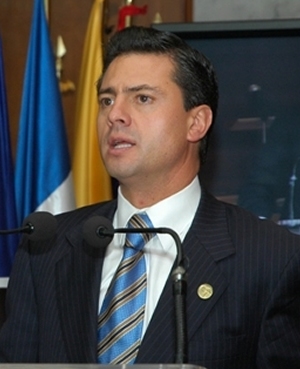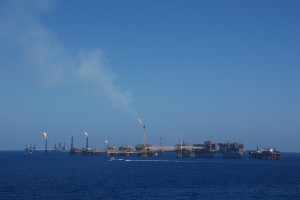
Mexico’s Energy Sector to Undergo Reform?
Energy analysts in recent months have grown much more confident that U.S. energy security is improving due to higher oil production, both in the United States, and among its North American neighbors. Many people focus on high oil production from Canada, particularly due to the vast reserves held in Canadian tar sands. However, there is little focus on the energy relationship between the United States and its southern neighbor.
Mexico is the eighth largest oil producer in the world, producing 2.5 million barrels of oil per day. Petroleos Mexicanos (PEMEX), the state-owned oil company, was created when President Cardenas nationalized the oil industry in 1938. It is essentially the sole oil producer – foreign oil companies are prohibited from operating in Mexico, which is written into the constitution. PEMEX’s success over the years has been a point of pride for the country.
However, production is drastically down from 3.4 million barrels per day in 2004, a 26% decline (see figure). This is largely due to the natural decline of a single massive oil field, Cantarell (located offshore in the Bay of Campeche), one of the largest oil fields in the world. Production has been declining for years, and earlier this year PEMEX stated that production reached its lowest point in 22 years.
Declining output is the result not only of aging oil fields, but also from chronic underinvestment in the oil sector. Since PEMEX is state-owned, it is often plagued by corruption and an inefficient bureaucracy. Oil revenue represents 30% of Mexico’s total revenue. While this does not make Mexico a petro-state quite like Saudi Arabia (where 80% of its revenue comes from oil), PEMEX’s coffers are rather enticing, predictably leading to meddling from political elites. Also, since international oil companies (IOC’s) are forbidden from investing in Mexico’s oil sector, capital and state-of-the-art technology are often unavailable to boost productivity in aging wells. This has prevented Mexico from fully exploiting its offshore reserves, which it estimates to be about 27 billion barrels.
Despite these issues and despite the long history of state-driven oil production, reform is in the air. The recent election of Enrique Pena Nieto, ushering in PRI after 12 years on the sidelines, has raised expectations that Mexico may loosen its grip on the oil sector. While Pena Nieto did not win a majority in parliament, both he and the main opposition candidate supported energy sector reforms, which may mean opening up production to IOC’s. There are calls for allowing joint ventures between foreign oil companies and PEMEX, which would allow for better technology and access to finance.
This has oil companies salivating. According to the Financial Times, days before Mexico’s Presidential election, ExxonMobil’s CEO Rex Tillerson stated, “We’re hopeful that Mexico, as it continues its pathway to reforms…will open up opportunities for greater partnerships and collaborations, and bringing technology to bear on the huge resources that Mexico has,” and he added, “It’s going to be a long process, and what we’re advocating for is just for Mexico to take the next step…And if the next step provides an avenue for ExxonMobil to participate, we will.”
Mexico remains a large oil producer, and is the second largest source of oil imports for the United States after Canada. However, underinvestment and mismanagement along with aging oil fields has Mexico scrambling to stave off decline. By 2020, Mexico could become a net importer of oil. That is, unless it decides it needs ExxonMobil.






